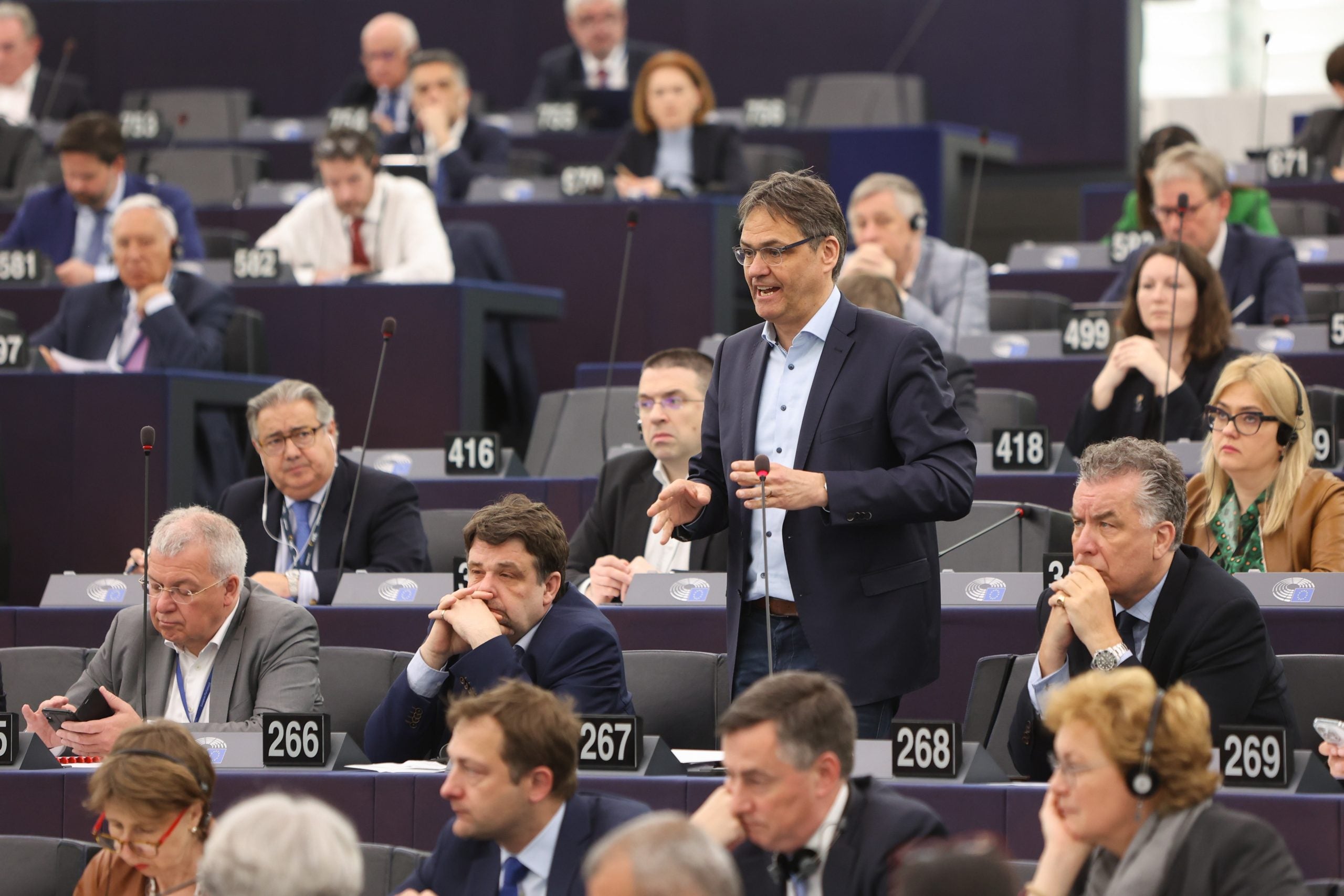
Three major changes to EU climate legislation have become law following their final adoption by the EU Council on 25 April, heralding some big changes for businesses and citizens in the coming years. The trio is the key component of the ‘Fit for 55‘ package proposed in the summer of 2021 – to put the EU on a path to reducing its greenhouse gas emissions by 55% by 2030, relative to 1990 levels – and implements European Commission President Ursula von der Leyen’s flagship EU Green Deal.
German MEP Peter Liese, who represented the centre-right European Peoples Party in the negotiations, called the now-adopted ‘Fit for 55’ package “the biggest climate protection law of all time”, dwarfing the US’s Inflation Reduction Act in terms of regulatory change.
CBAM: the world’s first carbon border tax
The move that will get the most international attention is the adoption of the world’s first carbon border tax, called the Carbon Border Adjustment Mechanism (CBAM). Goods imported into the EU from countries with less-stringent climate legislation will have an import duty levied on them to avoid the phenomenon of “carbon leakage” where European companies could move production out of the EU to avoid a carbon price or face unfair global competition if they do not. The EU has given it an unwieldy name because calling it a tax or tariff would have required a unanimous vote in the Council, which would have seen a veto, and also would have been more easily challenged at the World Trade Organization.
Under the political deal reached between the European Parliament and EU Council (national governments) in December 2022, the levy will begin in 2026 and initially apply to imports of steel, cement, aluminium, fertilisers, electricity and hydrogen, which was not in the Commission’s initial proposal but was added by the Parliament. During negotiations, the Parliament also insisted on adding provisions for CBAM’s future application to processed products such as cars, screws and bolts. There is a provision too for applying the levy to indirect emissions from activities like land use change “under certain circumstances” – to be defined, it was a major sticking point in the negotiations and opposed by several national governments including Germany.
Free allowances in the EU Emissions Trading System (ETS) for the industries affected by CBAM will be phased out, the reasoning being that the new regime will protect them in future and the free allowances will no longer be necessary. However, the final phase-out schedule is less generous to industry than the Commission’s initial proposal. Under the deal, free allowances will be cut in half by 2030 and entirely phased out by 2034. The Commission originally envisioned a more gradual phase-out until 2035. Eurofer, the steel sector association, has warned the accelerated timeline “risks wiping out a large part of EU steel exports worth €45 billion [$49.7bn]”.
'Fit for 55' package: a new ETS for buildings and transport
The second law coming onto the books is the launch of a new carbon market covering emissions from fuels used in cars and buildings from 2027. This new ETS will exist alongside the current EU ETS. Under the deal reached in December, the price of carbon from home heating and transport fuels will be capped at €45 per tonne (/t), to avoid the risk of an escalating price making fuel unaffordable for vulnerable parts of society and prompting a 'yellow-vests'-style backlash. The plan is expected to add €0.10 per litre to the price of petrol and diesel. The negotiators also added a provision stating that if energy prices are exceptionally high, the new scheme will be delayed by a year to 2028.
How well do you really know your competitors?
Access the most comprehensive Company Profiles on the market, powered by GlobalData. Save hours of research. Gain competitive edge.

Thank you!
Your download email will arrive shortly
Not ready to buy yet? Download a free sample
We are confident about the unique quality of our Company Profiles. However, we want you to make the most beneficial decision for your business, so we offer a free sample that you can download by submitting the below form
By GlobalDataSeparately, the main EU ETS has seen its requirements tightened for the current trading period of 2021 to 2030, requiring industrial sectors covered by the system to cut their emissions 62% below 2005 levels by 2030 – a big step up from the existing 43% target. That move is expected to bring the price of carbon back up to €100/t over the coming years, up from current levels of €80–85.
A Social Climate Fund for a 'just' transition
The third 'Fit for 55' element to be enacted this week is an €86.7bn Social Climate Fund to protect vulnerable households and avoid a backlash to the EU's energy and climate agenda. That was increased during negotiations from the €72.2bn originally proposed by the Commission. EU countries will have to submit 'Social Climate Plans' after consulting with local and regional authorities, businesses, unions and civil society.
The Fund will finance temporary direct income support to tackle the increase in road transport and heating fuel prices from the new ETS – with a limit of up to 37.5% of the total estimated price tag of each national plan. It will also cover long-lasting structural investments, including into buildings renovation, the integration of renewable energy, infrastructure for zero and low-emission vehicles, and public transport. The Fund will start in 2026, one year before the carbon price on road and heating fuel kicks in. It will initially be financed via the revenues obtained from auctioning 50 million EU ETS allowances, estimated at around €4bn. Once the new ETS starts up, the fund will be financed from the sales of allowances to cover road and building emissions, up to an estimated €65bn, with an additional 25% contributed from national budgets.
Finally, the EU law banning the internal combustion engine from 2030 also entered into force this week. It was delayed by a last-minute objection from Germany, which wanted to exempt combustion engines using synthetic e-fuels. Germany eventually relented after extracting a promise from the Commission that it will define combustion engine cars using e-fuels as 'zero-emission' in separate legislation covering vehicle type approval by the end of this year. However, analysts say this was a Pyrrhic victory designed for the German government to back down while saving face, because the Commission cannot make any such promise, as such a move can be rejected by a majority of national governments or the European Parliament whenever it it proposed.







